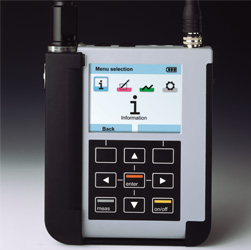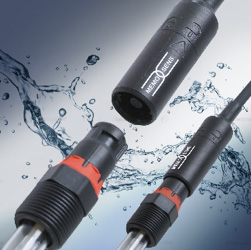
It’s 3:00 AM and I’m Out Calibrating a pH Sensor
Whether you are on 1st, 2nd, or 3rd shift, calibrating sensors seems to always happen at the worst time. It’s pouring down rain, snowing, +100º heat at noon, or below freezing in the middle of the night. I’d rather be in a climate-controlled shop doing calibrations at a time I planned. Wouldn’t you? To me, that’s a no-brainer!
In fact, there are three no-brainers to me when it comes to pH calibrations:
- It’s easier to calibrate a pH sensor in the shop or lab
- It’s less expensive to calibrate a pH sensor in the shop or lab
- A pH sensor calibrated in the shop or lab will produce better results
By using Memosens® technology, these “no-brainers” can be solved through the use of a portable meter for calibrations of pH/ORP, conductivity, and oxygen sensors. Because Memosens sensors are “smart”, you can calibrate pH sensors in a shop, without being connected to the field transmitter. The sensors head stores the calibration data. Once the sensor is connected to the field transmitter, it provides an accurate measurement without any additional adjustment. No more field calibration required!
No-brainer #1: It’s easier to calibrate a pH sensor in the shop or lab
 If I had my druthers, I would prefer to be calibrating in a shop or lab using clean buffer solutions already at the same comfy 72º F as my clean pH sensor.
If I had my druthers, I would prefer to be calibrating in a shop or lab using clean buffer solutions already at the same comfy 72º F as my clean pH sensor.
Using a Memosens portable meter, I can perform the procedure in less than 2 minutes which includes checking the health of the sensor. Once I calibrate my sensors, I take my Memosens sensors into the field and:
- Remove the old sensors
- Install the pre-calibrated sensors in the process
- Take the old sensors back to the shop or lab for testing and evaluation
For analog sensors, the alternative is to load up my “pH bucket” or “pH cart” with cleaning solutions, calibration standards, and replacement sensors and go out into the plant. Once I get to the old sensor, I go through the following procedure:
- Remove the old sensor
- Clean it
- Test it in buffer 7 (if still not working)
- Calibrate the sensor with two buffers
- Test it in buffer 7 (if still not working)
- Throw away the sensor
- Replace the old sensor with a new sensor
- Calibrate the new sensor with two buffers
- Test it in buffer 7
- Install in the process
Compared to analog sensors, using digital Memosens sensors is a piece of cake.
No-brainer #2: It’s less expensive to calibrate a pH sensor in the shop or lab
Less maintenance time in the field + Fewer sensors thrown away = $ Saved
In addition to this simple formula, money is saved with pre-calibrated sensors because they’re ready to go when you need them, without requiring the involvement of someone trained in calibration. Whether it’s 100º F or 5º F outside, raining, snowing, or 3 am, a pre-calibrated sensor is patiently waiting for its’ turn.
 No-brainer #3: pH sensors calibrated in the shop or lab produce better results
No-brainer #3: pH sensors calibrated in the shop or lab produce better results
A calibration performed in a controlled environment at a time convenient to the technician (rather than when the process is down) will produce better results. Field calibrations are subject to buffer temperature change, buffer contamination, and time. A pH sensor is only as good as its calibration!
So let me get this right,when using Memosens offline calibration is easier, less expensive, and produces better results…no-brainer!

 No-brainer #3: pH sensors calibrated in the shop or lab produce better results
No-brainer #3: pH sensors calibrated in the shop or lab produce better results